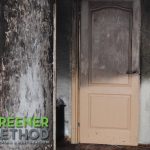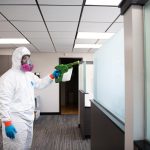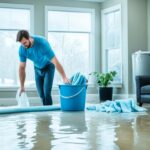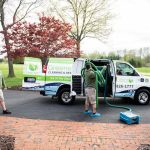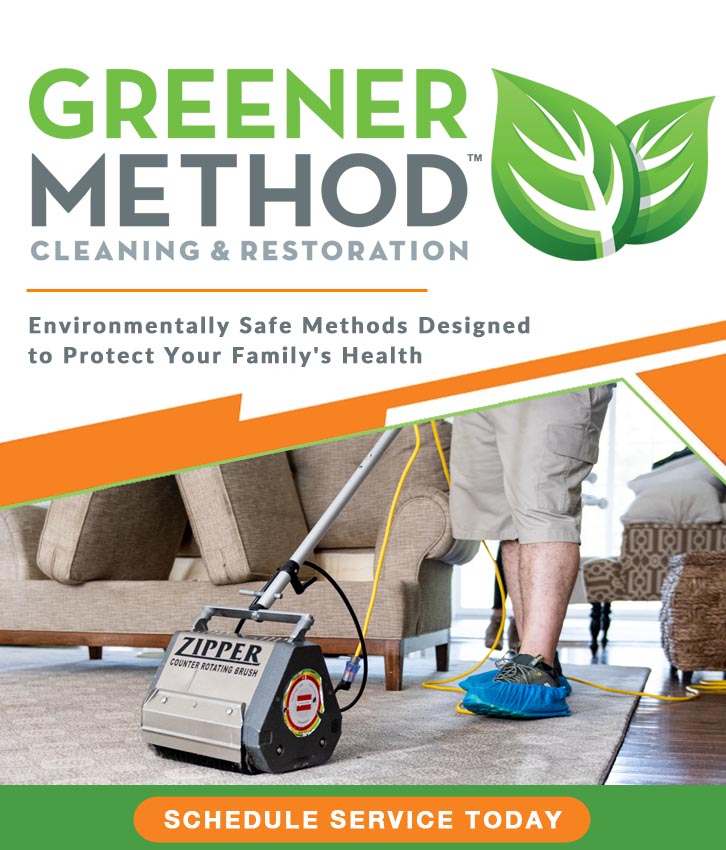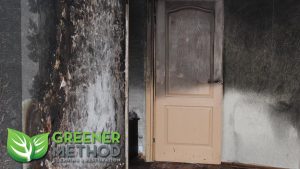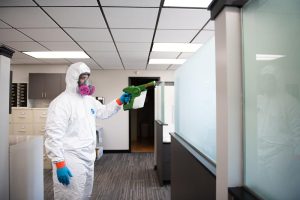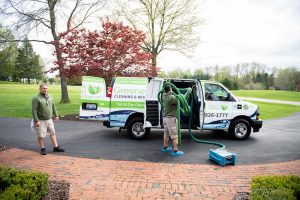Ever thought about how important it is to act fast after water damage? Your first steps can be the difference between a simple fix or something more costly. From finding where the water is coming from to protecting your stuff and staying safe, quick and smart choices matter.
Key Takeaways:
- Identify and stop the water source.
- Ensure electrical safety by shutting off power.
- Protect and relocate valuable items to prevent further damage.
- Document the damage for insurance claims.
- Begin the drying process promptly to prevent mold.
- Engage professional restoration services for comprehensive recovery.
Locate the Source of the Water
Finding the water’s source is key in fixing water damage. It could be from a burst pipe, a crack in the house’s foundation, or even a sewer backup. Knowing where it comes from helps stop the water and deal with the problem better.
If a pipe is broken, turn off the main water supply right away. This stops more water from flowing. For damages outside the home, like foundation cracks or natural floods, you usually need professionals to help.
It’s also important to know what kind of water is causing the damage. Clean water from pipes is different from dirty water from sewage. Early and accurate identification is very important. It helps make sure the damage stops quickly and is handled well.
So, figuring out where the water’s coming from early is really helpful. It can lower the damage and the cost. This is true whether it’s a simple or a complex problem. Acting quickly and wisely is the best way to control water damage.
Turn Off the Power
Keeping safe around electricity after floods is crucial. If water gets to the power outlets or into the wiring, turning off the power is a must. This can be done at the circuit breaker. Don’t try this on your own if the area is flooded, like a basement.
After getting rid of the water, talking to an electrician is important. They should check your home’s wiring and appliances before you turn the power back on. This check makes sure your electrical system is safe and works well. It reduces the risk of accidents during cleanup and fixing parts of your home affected by the flood.
Contact Your Insurance Company
Once you’ve taken care of the immediate water damage, your next move is to call your insurance company. Normally, a homeowner’s insurance will look after sudden issues like a pipe breaking. But coverage for natural floods isn’t always there. Start documenting the damage for your insurance claim as soon as you can.
- Document the Damage: Take clear photographs and detailed notes of all affected areas. This thorough documentation is crucial for presenting a comprehensive account to your insurer.
- Contact Your Insurer: Reach out to your insurance company as soon as possible. Provide them with all the necessary information, including the documentation of the damage.
- Understand Your Coverage: Be clear on what your homeowner’s insurance water damage policy covers, noting any exclusions that might apply to your situation.
- Consult Your Insurance Adjuster: An insurance adjuster will assess the damage. Make sure they have access to all documented evidence to support your claim.
- Engage Recommended Contractors: Your insurer may provide recommendations for trusted contractors and mold remediation specialists, ensuring professional-grade restoration.
Getting in touch with your insurance company quickly can lessen the money impact of water damage. It also speeds up the process of putting things back together. Good documentation will help your claim move smoothly. It’s key to act fast when it comes to getting your home fixed.
Start the Drying Process
Starting to dry things out fast is key to limit water damage and stop mold. It’s best to begin as soon as you’ve controlled the water problem. Using gear like wet-vacs, fans, and dehumidifiers helps get rid of water and dampness.
The drying process can take a few days. This depends on how much water there was and how humid the place is. Pros know exactly what to do and bring the best tools. They can quickly dry your home while keeping its structure safe.
Mold can show up in just one day after water hits. So, acting quick is a must. The quicker you dry, the less likely mold is to grow. Getting expert help not only dries things faster. It also fights off mold, making your home safer after the accident.
Contact Restoration Professionals
Getting help from professional water damage restoration experts is key after a water damage issue. They make sure to remove all the water properly and check for mold everywhere, even in hidden places.
For mold remediation services, these professionals can fight mold that shows up within a day of water damage. They use special methods to get rid of the mold and fix the areas it damaged. From getting rid of the water to drying and fixing what’s harmed, these pros cover everything well.
Conclusion
Dealing with water damage can feel overwhelming. But, with a clear plan, you can reduce its effects. Finding and stopping the water source is first. It’s also vital to check and turn off the power for safety.
Take detailed notes and pictures of the damage. This will help with your insurance claim later on. Quickly starting to dry things out can stop mold and other issues from growing.
Hiring experts in water damage recovery is key to a full and fast fix.
Quick and firm actions will protect your home and savings. Knowing what to do, from shutting off the water to calling in the pros, speeds up the recovery. Safety and trusting the right people ensure you can get back to normal living soon.






